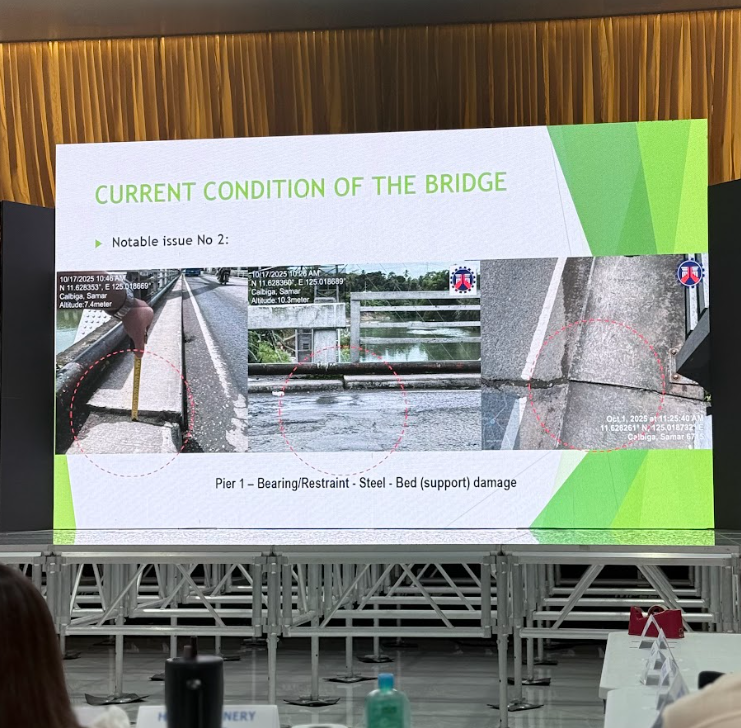
CATBALOGAN CITY (October 21, 2015) — The Department of Public Works and Highways 2nd District Engineering Office (DPWH 2nd DEO) in Samar province held a coordination meeting on October 20, 2025, to discuss the implementation of the 15-ton Gross Vehicle Weight (GVW) restriction for the Calbiga Bridge.
In the structural assessment, the DPWH 2nd DEO identified notable issues, including an abnormal gap at the expansion joint and deteriorated sealant in Abutment 1; damage to the bearing/restraint—steel bed (support) in Pier 1; corrosion on the bottom flange of girders at Span 1; corrosion and section loss in both the right and left railings across all spans; and a loose connection in the additional girder at Span 2.
“The findings are clear. The bridge is showing signs of stress and weakening from years of service and continuous overloading,” said DPWH 2nd DEO District Engineer Herminio V. Gulmatico.
According to the DPWH 2nd DEO, the Calbiga Bridge is a steel truss bridge, built in the early 1970s, around the same time as the San Juanico Bridge. Due to aging, fatigue, and deterioration, it can no longer safely support 15 metric tons per lane for vehicles crossing simultaneously in both directions under ideal conditions.
A 15-ton weight limit will be strictly enforced starting October 27, 2025. The traffic rule in Calbiga will include allowing only one vehicle to cross the bridge at a time.
Under the restrictions, no trailers or trucks over 15 tons are allowed, even after reinforcement work. Heavy trucks that cannot lighten their load must reroute through Eastern Samar, exiting at Buray, Paranas, for northbound travel, or Basey for southbound traffic.
The DPWH 2nd DEO suggests alternative logistics such as RoRo or barging, using existing roll-on/roll-off or barge services in strategic locations instead of crossing the bridge directly. Temporary staging areas and re-dispatching points may be set up near both ends of the bridge for trans-shipment or reloading, helping vehicles continue their route while adhering to load restrictions.
“Everyone must understand why this action is necessary. If something unfortunate happens to the bridge, it will not only cause inconvenience but also lead to serious disruptions to mobility, livelihoods, and the local economy, especially since we have no alternative route to serve as a backup,” Gulmatico emphasized.
This urgent action aligns with the policy compliance of DPWH Department Order No. 8, s. 2024, which includes updated guidelines on load posting for bridges, and the Memorandum dated October 7, 2025, for the urgent enforcement of traffic rules regarding maximum load limits for bridges nationwide.
Gulmatico reported that they requested a ₱140 million budget for Calbiga Bridge retrofitting. The budget is pending approval, and once granted, civil works can begin.
He also urged stakeholders, transport groups, truckers, drivers, business sectors, and the public to understand, cooperate, and comply. (By Aaron A. Cotejar, PIA Samar)










